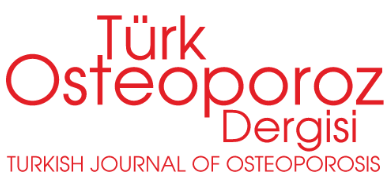ABSTRACT
Objective:
The aim of this study is to investigate the frequency of fractures and related factors in children with spina bifida who were followed up in our hospital.
Materials and Methods:
By retrospectively examination of the medical records of 450 patients with spina bifida, who were followed up by our clinic between 2000 and 2018, the patients were evaluated in terms of factors such as frequency of fracture, age of the first fracture, lesion level, ambulation capacity, physical therapy initiation age, fracture site and mechanism.
Results:
In the 450 patients examined, the fracture rate was 5.7%. While there was a relationship between low ambulatory capacity and high-level lesions and fracture risk, the early initiation of physical therapy did not protect against fracture.
Conclusion:
According to these data, fractures are more common in patients with spina bifida. It was concluded that the quality of mobilisation, not the duration, was the more important risk factor for fracture.
Keywords:
Spina bifida, fracture, ambulation capacity, immobilisation
References
1Mitchell LE, Adzick NS, Melchionne JM, Pasquariello PS, Sutton LN, Whitehead AS. Spina bifida. Lancet 2004:364:1885-95.
2Avagliano L, Massa V, George TM, Qureshy S, Bulfamante GP, Finnell RH. Overview on neural tube defects: From development to physical characteristics. Birth Defects Res. 2019 Nov 15;111:1455-67. doi: 10.1002/bdr2.1380.
3Tunçbilek E. Türkiye’deki yüksek nöral tüp defekti sıklığı ve önlemek için yapılabilecekler. Çocuk Sağlığı ve Hastalıkları Derg 2004:79-84.
4Marreiros H. Update on bone fragility in spina bifida. J Pediatr Rehabil Med 2018;11:265-81.
5Dosa NP, Eckrich M, Katz DA, Turk M, Liptak GS. Incidence, prevalence, and characteristics of fractures in children, adolescents, and adults with spina bifida. J Spinal Cord Med 2007;30 (Suppl 1):S5-9.
6Trinh A, Wong P, Brown J, S Hennel S, Ebeling PR, Fuller PJ, et al. Fractures in spina bifida from childhood to young adulthood. Osteoporos Int 2017;28:399-406.
7Marreiros H, Monteiro L, Loff C, Calado E. Fractures in children and adolescents with spina bifida: the experience of a Portuguese tertiary-care hospital. Dev Med Child Neurol 2010;52:754-9.
8Hoffer MM, Feiwell E, Perry R, Perry J, Bonnett C. Functional ambulation in patients with myelomeningocele. J Bone Joint Surg Am 1973;55:137-48.
9Okurowska-Zawada B, Konstantynowicz J, Kułak W, Kaczmarski M, Piotrowska-Jastrzebska J, Sienkiewicz D, et al. Assessment of risk factors for osteoporosis and fractures in children with meningomyelocele. Adv Med Sci 2009;54:247-52.
10Quan A, Adams R, Ekmark E, Baum M. Bone mineral density in children with myelomeningocele. Pediatrics 1998;102:e34.
11Aliatakis N, Schneider J, Spors B, Mohr N, Lebek S, Seidel U, et al. Age-specific occurrence of pathological fractures in patients with spina bifida. Eur J Pediatr 2020:1-7.
12Parsch K. Origin and treatment of fractures in spina bifida. Eur J pediatr Surg 1991;1:298-306.
13Lock T, Aronson D. Fractures in patients who have myelomeningocele. J Bone Jt Surg 1989;71:1153-7.
14Akbar M, Bresch B, Ralss P, Fürstenberg CH, Bruckner T, Seyler T, et al. Fractures in myelomeningocele. Journal of Orthopaedics and Traumatology 2010;11:175-82.
15Townsend PF, Cowell HR, Steg NL. Lower extremity fractures simulating infection in myelomeningocele. Clin Orthop Relat Res 1979:255-9.
16Swaroop VT, Dias L, Meningomyelocele. In Weinstein SL, Flynn JM, editors. Lovell and Winter’s Pediatric Orthopaedics. 7th ed. Philadelphia, LWW; 2014. p. 555-86.
17Akgülle AH, Yalçın S. Spina Bifida. In: Çullu E, editör. Çocuk Ortopedisi., Bayçınar Tıbbi Yayıncılık: İstanbul; 2012. p. 399-414.
18Szalay EA, Cheema A. Children with spina bifida are at risk for low bone density. Clin Orthop Relat Res 2011:469:1253-7.



